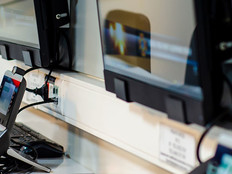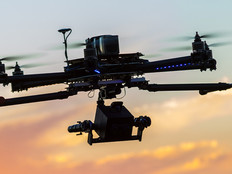First Responders Embrace Apps for Public Safety Communications, BYOD Smartphones
For firefighters, police officers, EMS personnel and other first responders, being able to communicate securely and quickly in an interoperable way during an emergency can mean the difference between life and death.
Increasingly, first responders and public safety officials are getting more flexibility in how they communicate and which mobile devices they use on the job.
First Responders Use BeOn App to Stay in Touch
Traditionally, most public safety communications have gone over push-to-talk radios. Ensuring interoperability, or the ability to operate on the same frequencies as partner agencies, is critical for first responders.
Since 2010, Harris Corporation has offered a smartphone application called BeOn. The app offers traditional land mobile radio features such as group calling, individual calling, distress calls and dispatch services while integrating wireless services such as user location, user presence or status, and text messaging. It also works over 3G and LTE cellular networks. In 2012, Harris updated BeOn to add support for Project 25 PTT features, a suite of digital radio communications standards that North American federal, state and local public safety agencies use.
During the 2014 Boston Marathon, Brookline Police Department officers used BeOn, which can be downloaded on off-the-shelf smartphones, to communicate over their department’s frequency using any available network connection, JEMS notes.
Using BeOn, the department’s commanders, dispatchers and officers could communicate. And the app’s geomapping feature allowed those people to monitor each assigned team’s location. Additionally, the app let plainclothes officers communicate on normal smartphones, allowing them to more seamlessly blend in with crowds.
The Montgomery County Hospital District, in Texas, helped provide support for the 2014 Ironman Texas North American Championship, a triathlon that runs throughout a 44-square-mile area 28 miles north of Houston known as “The Woodlands.” The seven EMS units used the BeOn to continuously send each other mapping and location information, which then integrated their locations with a command center using a Harris Symphony dispatch console, according to JEMS.
As a result, dispatchers could immediately locate the nearest medic whenever an injury was reported. The first responders were able to aid and transport 40 participants, and the app also made sure that the EMS crews were evenly spread out over the entire course.
FirstNet Ponders BYOD Smartphone Policy for Upcoming Broadband Network
Just as apps like BeOn are enabling first responders to use smartphones and embrace bring-your-own-device policies, larger organizations also are welcoming BYOD. For example, the First Responder Network Authority (FirstNet), which is charged with building and running a public safety broadband network, is welcoming BYOD.
Last month, the organization noted in a blog post that many in the public safety community have personal smartphones that run on commercial wireless networks and are interested in accessing the public safety broadband network from their personal phones once the network gets up and running.
The FirstNet CTO Devices Group noted that many existing public safety devices are highly specialized and costly and could benefit first responders by working over the network as well. Therefore, FirstNet said it is planning to support personal devices via a BYOD policy that is being developed as part of the overall network architecture.
FirstNet said its policy will cover a variety of scenarios, including letting public safety users access their agency email and public safety applications on their personal smartphones and tablets while using the network.
The BYOD policy is intended to cover a public safety agency that may own devices that are not part of FirstNet's device portfolio. Some of these devices might be enabled with FirstNet’s frequency in the 700 MHz band, but most will require access to the public safety network through commercial partner bands, FirstNet said.









